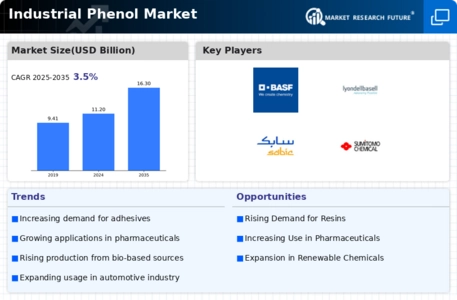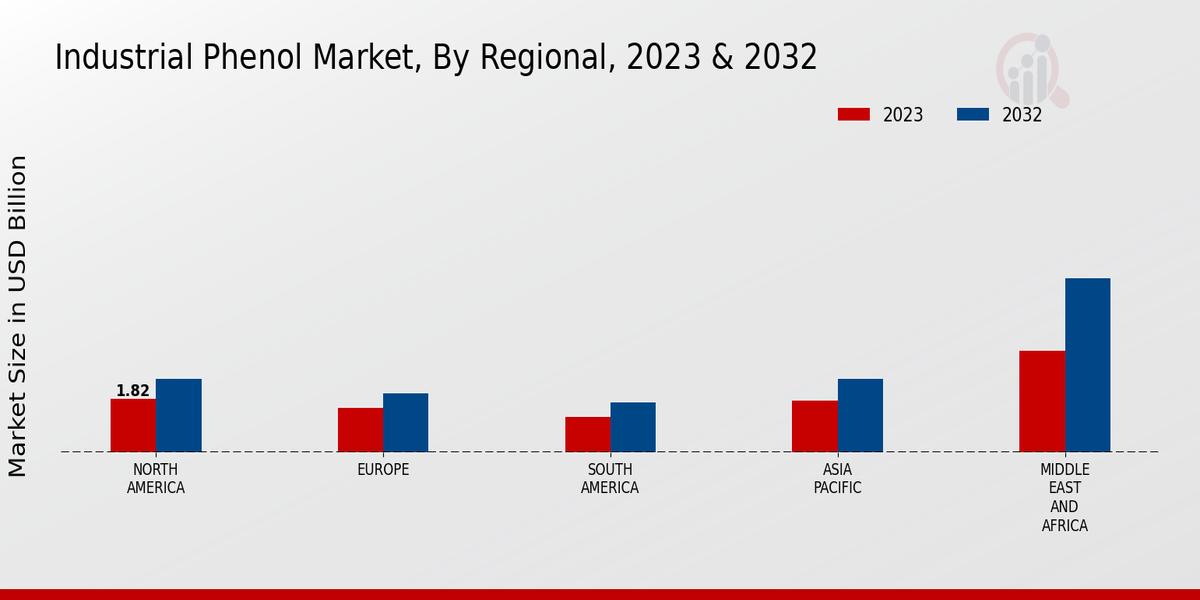Market Trends and Projections
The Global Industrial Phenol Market Industry is characterized by various trends that shape its future landscape. Current projections indicate a market size of 11.2 USD Billion in 2024, with a compound annual growth rate of 3.48% anticipated from 2025 to 2035. This growth trajectory suggests a steady increase in demand for phenolic compounds across multiple sectors. The market's evolution is influenced by factors such as technological advancements, regulatory changes, and shifts in consumer preferences. Understanding these trends is essential for stakeholders aiming to navigate the complexities of the market and capitalize on emerging opportunities.
Rising Demand for Phenolic Resins
The demand for phenolic resins, a primary application of phenol, significantly impacts the Global Industrial Phenol Market Industry. These resins are widely utilized in the production of composite materials, adhesives, and coatings, which are essential in various industries, including construction and automotive. The increasing need for durable and high-performance materials is likely to drive the market forward. As industries seek to enhance product performance, the market is expected to witness substantial growth, contributing to the overall market size of 11.2 USD Billion in 2024. This trend suggests a sustained demand for phenolic resins, reinforcing the importance of phenol in industrial applications.
Growing Demand in End-Use Industries
The Global Industrial Phenol Market Industry experiences a robust demand driven by its extensive applications in various end-use sectors such as automotive, construction, and electronics. As industries increasingly adopt phenolic compounds for their superior properties, the market is projected to reach 11.2 USD Billion in 2024. This growth is indicative of the rising need for high-performance materials that enhance product durability and efficiency. For instance, the automotive sector utilizes phenol in the production of resins and adhesives, which are essential for manufacturing lightweight and fuel-efficient vehicles. Consequently, the expanding industrial landscape is likely to bolster the market further.
Market Expansion in Emerging Economies
Emerging economies are becoming pivotal in the Global Industrial Phenol Market Industry, as rapid industrialization and urbanization drive demand for phenolic compounds. Countries in Asia-Pacific, particularly India and China, are witnessing significant growth in manufacturing sectors, which in turn fuels the need for industrial phenol. The expansion of infrastructure projects and automotive production in these regions is likely to contribute to the market's growth trajectory. As these economies continue to develop, the market could see a notable increase, aligning with the projected growth to 16.3 USD Billion by 2035. This trend highlights the potential for market expansion in regions with burgeoning industrial activities.
Technological Advancements in Production
Innovations in production technologies significantly influence the Global Industrial Phenol Market Industry, enhancing efficiency and reducing costs. The adoption of advanced catalytic processes and bio-based methods appears to streamline phenol production, thereby increasing output and sustainability. These advancements not only improve yield but also reduce environmental impact, aligning with global sustainability goals. As a result, manufacturers are likely to invest in these technologies, which could lead to a more competitive market landscape. The anticipated growth trajectory, with a projected market size of 16.3 USD Billion by 2035, underscores the importance of technological evolution in shaping industry dynamics.
Regulatory Support for Chemical Manufacturing
Regulatory frameworks play a crucial role in shaping the Global Industrial Phenol Market Industry. Governments worldwide are increasingly implementing policies that support the chemical manufacturing sector, promoting the use of phenolic compounds in various applications. For instance, regulations that encourage the use of eco-friendly materials may drive the adoption of bio-based phenol alternatives. This regulatory support is likely to stimulate market growth, as manufacturers adapt to comply with new standards. The projected compound annual growth rate of 3.48% from 2025 to 2035 indicates a favorable environment for the industry, driven by supportive legislation and a focus on sustainability.















